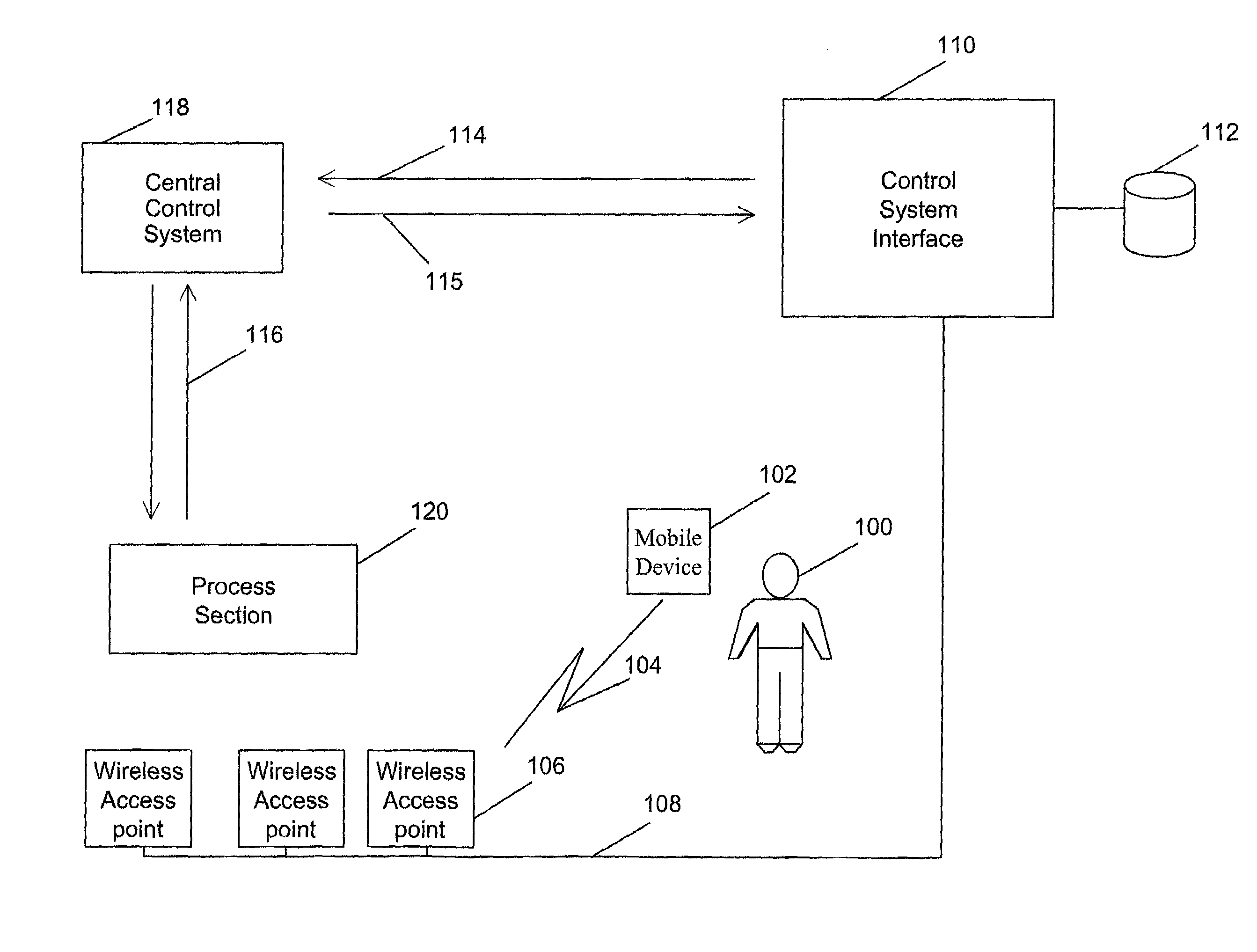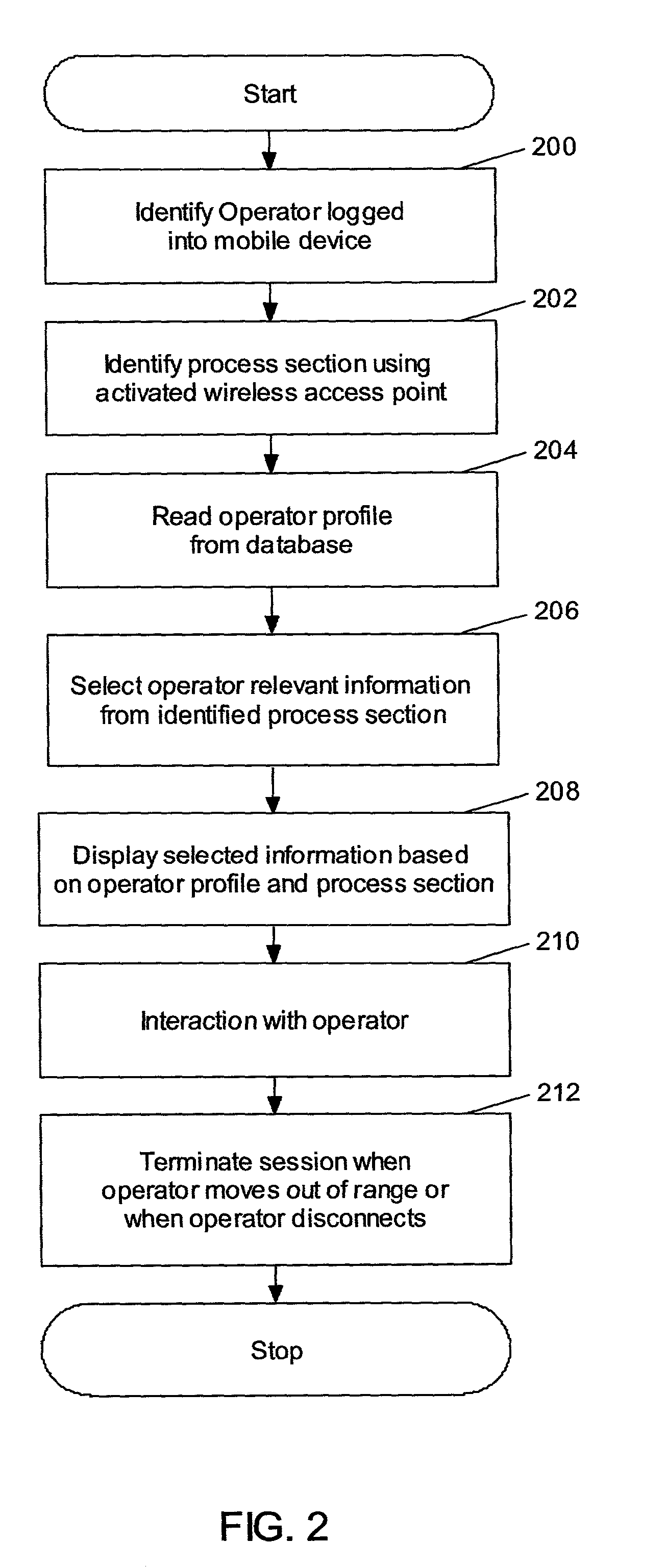Dynamic operator functions based on operator position
a dynamic operator and operator technology, applied in the field of industrial control systems, can solve the problems of high labor intensity, high cost, and inability to meet the needs of operators, and achieve the effect of reducing time and increasing interactivity
- Summary
- Abstract
- Description
- Claims
- Application Information
AI Technical Summary
Benefits of technology
Problems solved by technology
Method used
Image
Examples
Embodiment Construction
[0035]FIG. 1 is a block diagram showing an operator remotely accessing process sections in an industrial plant. A manufacturing or process industry contains many process sections and one such process section 120 is shown in FIG. 1. A process section may be a large section such as a production line, a bleaching plant or a paper machine or a small section of a process such as a single apparatus. There are many machines and / or sub-systems in a process section 120 that are interconnected to execute a specific process. In most industries, there is a central control system 118 to control and monitor process sections 120. The central control system 118 co-ordinates and controls various process sections 120 over a data network. The data network is usually a wired LAN connecting the process sections 120 to the central control system 118. The central control system 118 receives status information 116 from the process sections 120 and sends control instructions for the process section over the...
PUM
 Login to View More
Login to View More Abstract
Description
Claims
Application Information
 Login to View More
Login to View More - R&D
- Intellectual Property
- Life Sciences
- Materials
- Tech Scout
- Unparalleled Data Quality
- Higher Quality Content
- 60% Fewer Hallucinations
Browse by: Latest US Patents, China's latest patents, Technical Efficacy Thesaurus, Application Domain, Technology Topic, Popular Technical Reports.
© 2025 PatSnap. All rights reserved.Legal|Privacy policy|Modern Slavery Act Transparency Statement|Sitemap|About US| Contact US: help@patsnap.com



